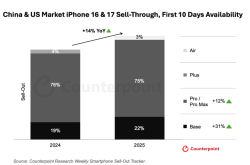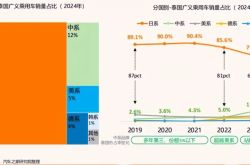AI Large Models' Commercial "Boomerang" Returns to Cloud Computing | Industry Resilience Amid Trade Wars (Part II)
![]() 05/12 2025
05/12 2025
![]() 663
663

Article | AI Relative Theory
The local large model industry strives to overcome its dilemma and reconstruct a new order, yet the volatile market environment could become the proverbial "last straw" at any moment.
Earlier this year, DeepSeek disrupted the industry's perception of open-source models with its formidable global influence. This prompted OpenAI CEO Sam Altman to reassess the correctness of the open-source strategy, while local large model vendors such as Alibaba, Baidu, and SenseTime have also accelerated this open-source trend through concrete actions.
However, returning to the industry's actual state, while open source is the general trend, it is not without its challenges. Especially against the backdrop of the United States continuously raising tariff barriers, open-source large models still grapple with issues like insufficient open-source incentives, hardware compatibility, and standards fragmentation.
Open Source Cannot Rely Solely on "Love"
Open source is seen as the key to addressing technological "bottlenecks." By open-sourcing models and toolchains, it reduces dependency on foreign software and hardware, facilitating the promotion of domestic chip adaptation and ecosystem construction.
However, to truly implement this, there are complex commercial dynamics at play behind open source. Industry insiders point out that as open-source vendors, they do not oppose others utilizing the model, but open-source projects do not generate revenue on their own. If they also have to invest human and material resources to adapt to domestic chips, and these chips sell well, yet they receive no return, what is the motivation?
Pure "love" cannot sustain the market. This also affects developers and investors of open-source large models.
For developers, the primary concern of technical adaptation and maintenance costs poses a significant challenge. While open-source large models like DeepSeek lower the technical threshold, they may require substantial customization and optimization in practical applications to adapt to diverse business scenarios. For instance, enterprises may need to integrate large models into existing systems, involving tasks such as data preprocessing, model fine-tuning, and performance optimization.
For industrial applications, open source has never been a "take what you get" approach. This undoubtedly requires professional developers to follow up, including subsequent updates and maintenance. Balancing the additional research and development costs and personnel costs is another "boomerang" effect that returns to enterprises.
Admittedly, open source sounds appealing, saving time, cost, and resources in pre-training. However, when enterprises obtain open-source models and integrate them with industry data for post-training, it remains a complex and arduous task—how to acquire, clean, and annotate data? How to address the extensive computing resources needed for post-training and inference stages? For small and medium-sized enterprises, these costs can be astronomical.
Under these circumstances, investors are far more cautious towards open-source large models. "What if you invest tens of millions of dollars and someone else open-sources it? Isn't it all in vain?" Last year, Zhu Xiaohu, managing partner of Jinsha Ventures, discussed this matter with a pragmatic attitude, after all, they are investing real money.
Currently, investors mostly still evaluate large models based on traditional software sales models, which do not apply to the open-source path. Therefore, investors' caution is justified, and clarifying the profit model remains a pivotal issue on the open-source journey.
Upon reflection, when the hype subsides, open source is not a "utopia," and its development will inevitably involve a multifaceted game of technology, commerce, and systems.
Chinese Large Model Vendors Embrace the Real Estate Developer's Path
The trend towards open-source large models is unstoppable. Setting aside the ideal of democratizing technology development, in the ongoing debate between open source and closed source, Chinese vendors appear to have found a compelling path to open source—constructing the large model market's basic commercial framework through "free traffic + value-added services." Local vendors like Baidu, Alibaba, and Tencent are attempting to create a commercial flywheel of "open-source model traffic - increased computing power consumption - increased cloud revenue."
For example, Baidu open-sources its ERNIE Bot large model to attract more developers and enterprises. When users invoke the model, they utilize Baidu Intelligent Cloud's computing, storage, network, and other resources, and Baidu can charge for providing these cloud services, realizing the ultimate commercial "harvest."
Although it's a detour, this scenario satisfies multiple market parties and achieves a win-win outcome. Developers and enterprises indeed need open-source models and high-quality cloud services as the foundation for their digital and intelligent transformation. Using the logic of the real estate industry, this is a proven path where affordable housing + high-quality property services form a strong bond between users and properties, ensuring long-term stable payments.
For developers, open-source large models are not the sole option, and future development choices are often built upon underlying cloud services. In other words, the quality of property services may be the key factor influencing future developers' choice of development platform.
Recently, Meta held its first virtual conference for AI innovation, LlamaCon, online and unveiled the Llama API. This is a cloud computing access service specifically designed for developers, allowing users to access Meta's latest Llama model through an API without deploying the model themselves. Thus, Meta is attracting users to migrate applications to its ecosystem through open-source strategies and efficient boundary API cloud computing services, thereby obtaining significant commercial returns.
Similarly, Hugging Face open-sources the Transformer library and thousands of pre-trained models to attract developers and then provides paid privatization solutions such as model monitoring, version management, and team collaboration to enterprise customers, seeking commercial success. This model is now relatively common in the AI industry.
For developers, this comprehensive advanced service system is a significant reason for choosing a platform. Similarly, for investors, the current commercial logic of the AI industry is more rational and sustainable than merely discussing open-source large models, enabling a clearer assessment of its profit model.
After the popularity explosion of DeepSeek, cloud platforms from giants like Tencent, Baidu, and Huawei have successively completed access. Open-source large models do not fundamentally widen the gap between companies, and their appeal to developers often stems from cloud services, such as whether there is a comprehensive development toolchain, whether support for modules like data storage, AI tuning, and model fine-tuning meets standards, and whether they can provide inclusive computing resources for developers.
Conclusion
Open source is regarded as the optimal path for the Chinese large model industry to break through technological blockades and achieve security and controllability. However, it's crucial to recognize that model capability is not the sole goal, and a singular focus on open-source models is insufficient. Commercial sustainability is equally paramount. Especially for developers and investors, as participants and financial backers in the large model industry, they are more concerned about commercial development issues beyond open-source large models.
The tariff barriers imposed by the United States are exacerbating the survival pressure on the large model industry. The more this is the case, the higher the preference for cloud platforms among developers compared to open-source models themselves. From this perspective, open source still has a long way to go, and this journey transcends large models, encompassing a leap across the entire ecosystem.
*All images in this article are sourced from the internet








